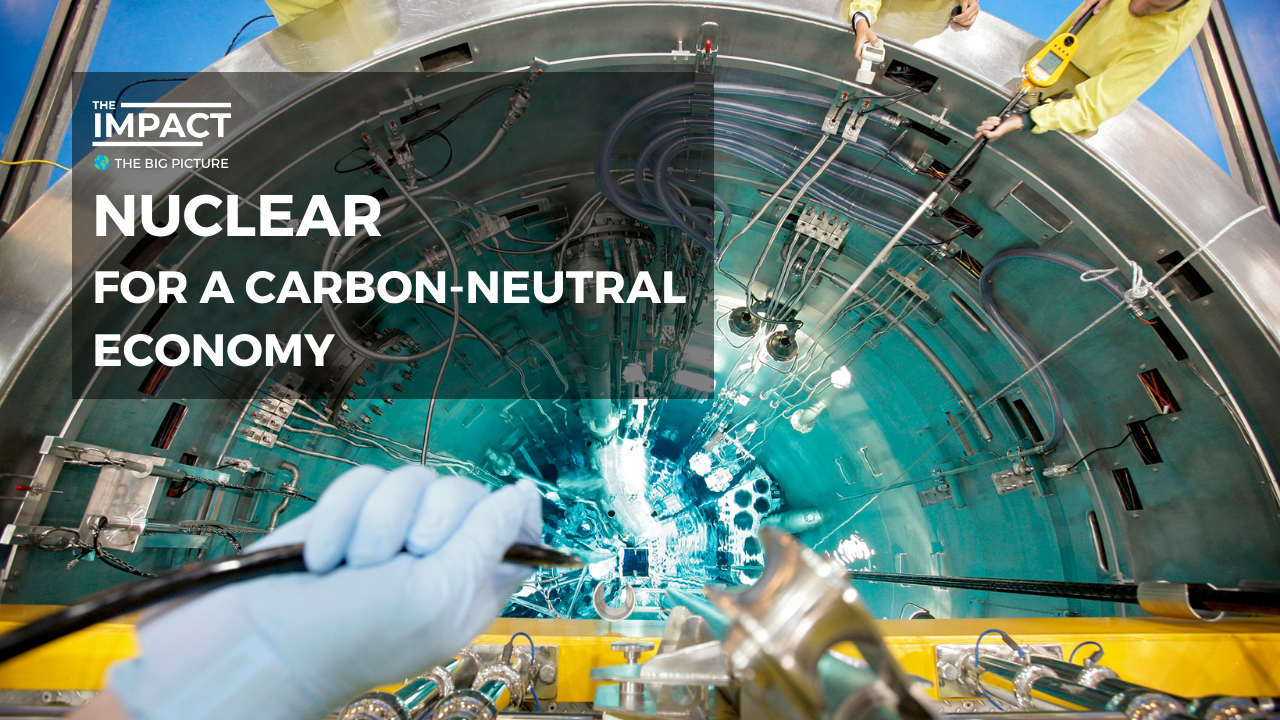The United States needs electricity. A lot of it.
In 2020 alone, the United States consumed roughly 3,843 terawatt-hours worth of electricity, half of China’s output but about triple what India uses and several orders of magnitude higher than any other country.
So, how was that electricity generated?
- 40% came from natural gas
- 20% came from carbon-free renewables (solar, wind, and hydropower)
- 20% came from nuclear
- 19% came from coal
- 1% came from petroleum.
This distribution is subject to change.
On January 27th, 2021, President Biden signed an executive order setting a nationwide goal for carbon-free power generation by 2035 and a carbon-neutral economy by 2050.
- Carbon-free means the U.S.’s energy sector won’t emit carbon pollution.
- Carbon neutral means the U.S. will take out of the atmosphere as much carbon as it emits.
That leaves the United States with a big question; in 13 years, how will the U.S. produce 60% of the nation’s electricity carbon-free?
Renewable Energy: A Good Start
Wind and solar are valuable technologies, but the reality of the situation is that they don’t have the necessary capacity to fulfill the country’s energy demands.
The biggest drawback is that wind and solar provide intermittent electricity, which doesn’t meet many electricity consumers’ needs. For example, powering industrial facilities that operate around the clock (carbon capture plants, wastewater treatment, and hospitals) requires consistent, reliable, robust energy production. This constant electricity generation is currently produced by fossil fuels because no viable alternative exists today.
Additionally, industrial processes like cement, steel, and glass production need high temperatures to operate, which can’t be achieved with electricity and instead require fossil fuels, especially coal.
This isn’t to discourage renewable use, but it is to recognize the reality when thinking about how we’ll reach carbon-free electricity in thirteen years.
This dilemma is why policymakers, start-ups, and environmentalists are looking toward nuclear as a solution.
The Current State of Nuclear
Today, most operating nuclear reactors were built around the 1970s and 80s.
The most common of these are light-water reactors, where controlled fissioning Uranium fuel creates heat and steam to drive a turbine, which produces electricity.
The reactors have their issues, though.
The accidents at Three Mile Island, Fukushima, and Chernobyl involved old reactor designs. In addition to safety concerns, barriers include significant capital expenditure, small return on investment, nuclear waste management, and nuclear material proliferation. This list explains why only one new nuclear power plant has been built in the U.S. since 1996.
These shortcomings create an opportunity to engineer out the risks involved with nuclear energy while maximizing the robust, stable, carbon-free heat and power that it provides.
Advanced Reactors
You can think of advanced reactors as vastly improved nuclear reactors that are still early in development.
How have nuclear reactors been improved?
- Efficient fuel use: Reactors turn a higher percentage of fuel into heat and electricity.
- Reduced waste production: Reactors produce less radioactive waste that has a shorter time decaying to a harmless material.
- Economic viability: New designs will reduce the cost to build and operate a reactor and make it cost-competitive on the market.
- Higher safety: New coolant and safety features eliminate the risk of meltdown.
Higher non-proliferation standards: New designs reduce the risk of nuclear material being diverted from the plant for nefarious usage.
Advanced Reactor Programs and Companies
The United States Department of Energy has 3 significant programs in advanced reactor development to address these engineering goals.
- High-Temperature Gas-Cooled Reactors: Uses a gas, such as helium, as a coolant instead of water.
- Advanced Reactor Concepts: Uses different cooling methods like lead, molten salt, saltwater, and supercritical water.
- Small Modular Reactors (SMR): Scaled-down nuclear reactors that can be deployed in various scenarios.
As funding has become available, these programs are now seeing technologies mature and be deployed.
NuScale, Kairos Power, Westinghouse, Holtec, and Terrapower are all U.S. based companies furthering advanced reactors.
While NuScale is the only company to receive U.S. Nuclear Regulatory Commission approval, the other companies are in various stages of licensing, operation, and commercialization, meaning the technology has been developed, and they are working on implementing it.
The Takeaway
The road to decarbonization and a healthy environment requires large-scale solutions that can be implemented within our lifetime. Advanced nuclear power is one of the few technologies that can meet that demand.
To meet the Biden Administration’s executive order for a carbon-free energy system and a carbon-neutral economy, advanced nuclear power will likely be the backbone of our energy production, powering those parts of the grid and industry that require a consistent, high-level heat and energy supply.
Renewables will then supplement advanced reactors and provide energy for smaller, more variable applications, like homes, cars, and small businesses, where current battery technology can cover electricity needs.
I am optimistic about the next generation of nuclear power, and you should be too!
About The Author

John currently works at the Pacific Northwest National Laboratory as an Engineering Analyst Fellow. He has his master’s in Biotechnology, Sustainability, and Entrepreneurship from Northwestern University and has conducted research on microbial wastewater mitigation, soil batteries, and biomass chemical conversion and valorization. His goal is to help the world develop, understand, and embrace solutions to the climate crises. In his spare time he enjoys trail running, cycling, rock climbing, reading books, and playing the banjo.

